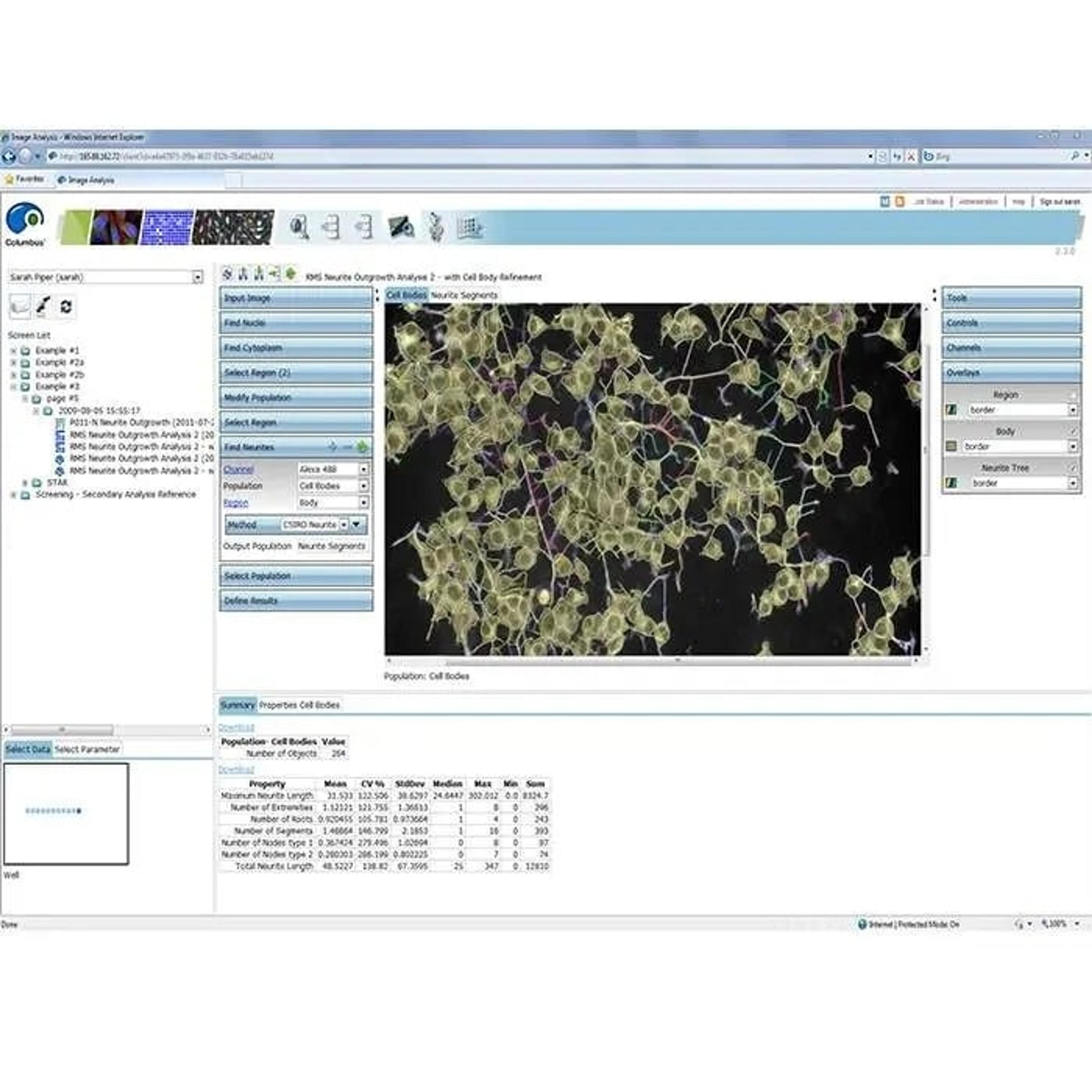PerkinElmer Launches Columbus™ 2.0 High Content Screening Platform for High-Volume Image Data Management and Analysis
20 Sept 2009At the High Content Analysis East conference in Boston, PerkinElmer, Inc announced the launch of the Columbus™ 2.0 platform, its flagship high content screening (HCS) data management software for cellular imaging and analysis.
The Columbus 2.0 software is a high volume image data management and analysis system that provides cellular researchers with a central repository to import, export, and manage all of their cell image data. The latest edition of the Columbus software provides users with faster interfacing between their images and data management, and is fully web-enabled – making it usable without software installation. A single installation of Columbus can serve an entire laboratory, department or even organization, for a cost effective solution to image data management and analysis that is highly scalable.
The only image data management system fully compliant with the Open Microscopy Environment (OME), Columbus is ideally placed to be a standard in the industry for image data management. The system utilizes the OMERO server, developed by the OME, which enables it to support a wide range of file formats, allowing flexible, rapid and high performance analysis of images regardless of their origin.
Achim von Leoprechting, PhD, vice president and general manager, Cellular Imaging and Analysis Solutions, PerkinElmer, said, “We are delighted to unveil the latest edition of our Columbus platform for cellular imaging and analysis. PerkinElmer has an established history of leadership in cellular imaging products and applications, and the Columbus software is an essential tool for handling large volumes of image files and data, and associated analyses.”
The Columbus data management software is available in two versions; Columbus Gallery, which provides a comprehensive data archive, management and visualization solution, and Columbus Conductor, which includes all the functionality of Columbus Gallery, plus the ability to analyze or re-analyze HCS data from PerkinElmer's Opera® or Operetta® imaging readers, or image data from other instruments using the high performance Acapella™ image analysis software. The Acapella software runs on the server computer, for greater processing power and multi-threading technology to run batch processes and obtain quicker results.
The Columbus software can also interface with third party solutions such as Pipeline Pilot and ActivityBaseXE,providing researchers with a high degree of interoperable capabilities for the detection and analysis of cells, tissues and organisms.

